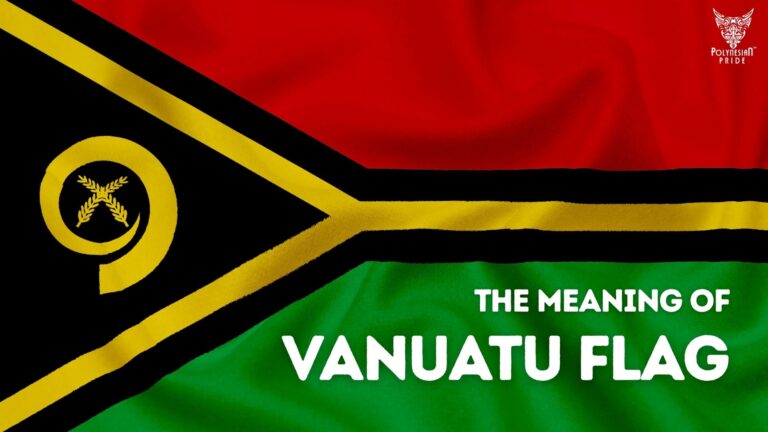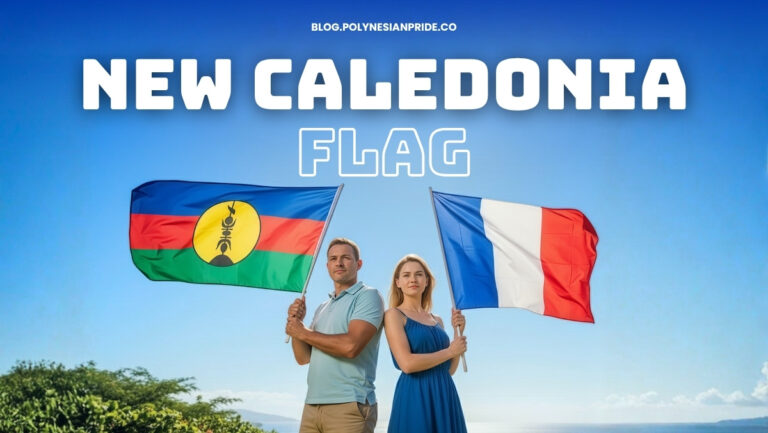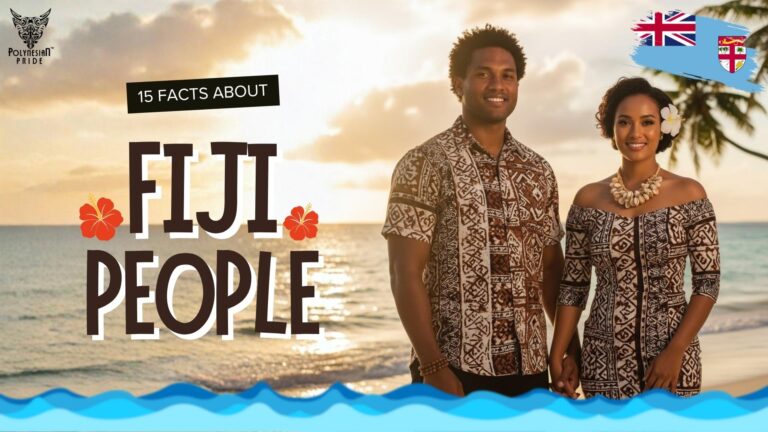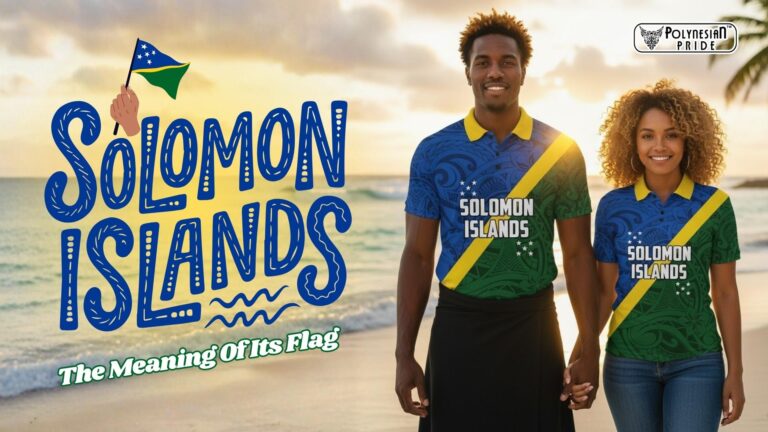A Living Mix of Europe & Oceania in Culture of New Caledonia’s People
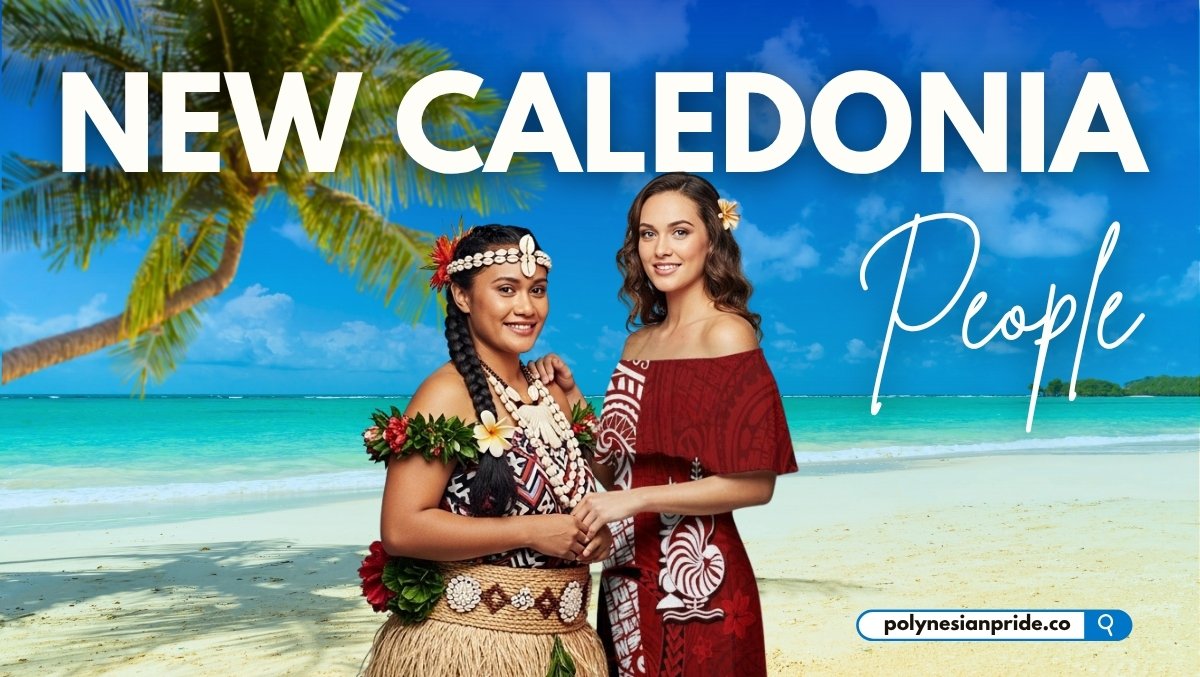
New Caledonia people are as diverse and captivating as the islands themselves. Though small in population, this French Pacific territory of New Caledonia is home to a vibrant cultural mosaic shaped by Melanesian roots, French influence, and Pacific migration. Every community — from Kanak villages to Nouméa’s modern streets — contributes to a society where ancient traditions and contemporary lifestyles coexist.
What makes people of New Caledonia truly unique is their cultural resilience and diversity. Here, more than 30 languages coexist with French; Christianity blends with ancestral beliefs; and everyday life reflects both island simplicity and European elegance.
This guide explores their demographics, cultures, languages, and the social dynamics that define this remarkable territory. Let’s discover who the New Caledonians are and what makes their story so compelling.
Key Takeaways about People of New Caledonia
- Population of New Caledonia: approximately 297,000 people in 2025.
- Ethnic groups in New Caledonia:
- Kanak (Melanesian Indigenous People) make up about 41% of the population.
- French settlers in New Caledonia (Caldoches and Métropolitains): around 24%
- Polynesians, Ni-Vanuatu, Indonesians, and Vietnamese – about 13% combined
- Others and mixed heritage groups – roughly 21%
- Languages spoken in New Caledonia: French (official) + over 30 Kanak languages
- Religion: A blend of Christian and ancestral beliefs, shaping both community life and Kanady island identity.
- Life expectancy: approximately 79.1 years, among the highest in the Pacific region.
- Urban concentration: Nearly two-thirds of the population lives on Grande Terre and around Nouméa.
The Kanak People – Heart of New Caledonia’s Identity
At the core of New Caledonia’s culture and traditions stands the Kanak people — the guardians of its ancestral land and the living link between the islands’ past and present. Their story is one of resilience, spirituality, and deep connection to both community and nature, shaping much of what defines Melanesian culture today.
Who Are the Kanak? Origins and Clan-Based Society
The Kanak people of New Caledonia are the Indigenous people of Melanesia, whose deep-rooted history stretches back thousands of years.
Their ancestors first arrived during the Lapita cultural expansion around 3,000 years ago, bringing pottery, advanced navigation, and social organization that would define the early identity of the islands.
These settlers established complex communities based on land stewardship, spirituality, and kinship — values that continue to shape New Caledonia’s demography and society today.

Key historical timeline and settlement facts:
- Approx. 1000 BCE: Early Melanesian settlers reached Grande Terre, establishing fishing and farming villages along fertile valleys and coastal areas.
- They chose the coastal plains, river valleys, and mountain foothills of Grande Terre as ideal areas for agriculture and fishing.
- Over time, they expanded to the Loyalty Islands, including Lifou, Maré, and Ouvéa, forming interconnected village communities.
- By the 18th century, when Europeans first arrived, Kanak society had already established governance, agriculture, and spiritual traditions.
- In 1853, France annexed New Caledonia, marking the beginning of French colonization in the Pacific, which disrupted but never erased Kanak traditions.
Through centuries, Kanak society evolved into a clan-based system (tribal structure) emphasizing kinship, land, and respect for ancestral ties — values that continue to shape New Caledonia’s demography and society today.
- Each clan (tribu) is led by a customary chief (chef coutumier) who represents both political and spiritual authority.
- The land (la terre) is considered sacred and is viewed as a living link between people and their ancestors rather than private property.
- Customary law (la coutume) governs social life through ceremonies, reciprocal exchanges, and a deep sense of mutual respect.
- Villages often center around the grande case, a large round hut symbolizing unity, tradition, and the continuity of leadership within the community.
Despite modernization, this clan-based society remains at the core of Kanaky identity, linking the past and present in a balance of tradition, community, and evolving cultural pride.
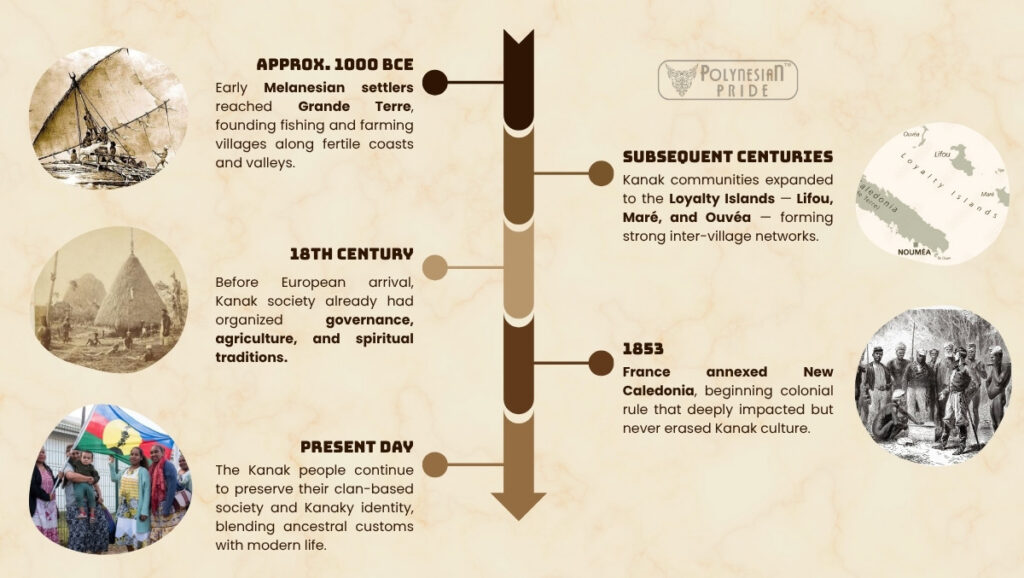
Kanak Art, Symbolism, and Traditions
The culture and traditions of New Caledonia are vividly expressed through Kanak art — a medium that connects spirituality, nature, and community. Kanak art and carvings often depict ancestral figures, totems, and natural motifs, crafted from wood, shells, or stone.
One of the most iconic symbols is the flèche faîtière, a carved wooden rooftop spear that crowns traditional round huts (grande case). It represents the link between the living and the ancestors, guiding spiritual protection over the household. The central rod symbolizes the chief, while the surrounding disks signify unity and the people. This flèche faîtière symbolism has become a national emblem — appearing on the Kanak flag, embodying Kanaky identity and resilience.
Other aspects of indigenous traditions include:
- Dance and Music: Ceremonial dances accompanied by drums and bamboo flutes tell stories of creation, love, and war.
- Traditional Crafts: Weaving, pottery, and carving serve both functional and ritual purposes.
- Storytelling and oral heritage: Legends of creation, heroes, and spirits are shared through song and performance, keeping indigenous traditions alive.

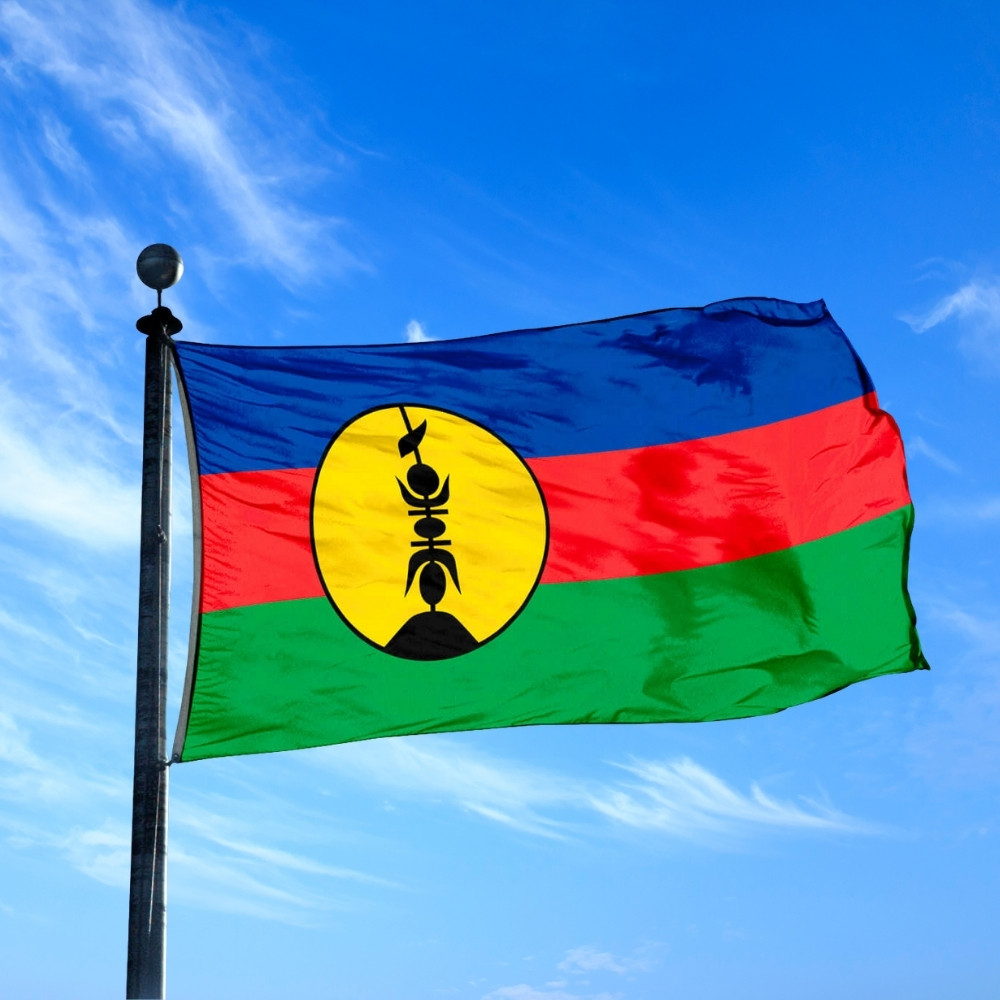
Kanak traditions have not disappeared with time — instead, they continue to evolve, influencing modern design, architecture, and public art throughout the islands.
Influence of France and Modern Society
New Caledonia today is a fascinating blend of French refinement and Melanesian authenticity. Decades of French colonization in the Pacific have left lasting marks on its language, institutions, and lifestyle — yet the Kanak people of New Caledonia continue to preserve their customs and values. The result is a society that gracefully balances European modernity with Indigenous traditions.
Language and Communication
French is the official language of New Caledonia — used in schools, government, business, and the media — a legacy of the French Colony that continues to shape everyday communication. Yet the territory remains linguistically rich, home to more than 30 Indigenous Kanak languages, a living testament to the Melanesian culture and deep Kanak heritage and customs that have survived for centuries.
However, these local languages now face growing challenges. With rapid urbanization around Nouméa and the spread of French-language education and media, many young people in cities use French almost exclusively. This leads to the gradual decline of Indigenous languages in daily use.
To preserve this linguistic heritage, both the government and cultural organizations have launched programs promoting bilingual education and the documentation of Kanak languages. In many schools, children now learn to read and write in both French and a local language — a small but meaningful effort to bridge modern identity with ancestral roots.
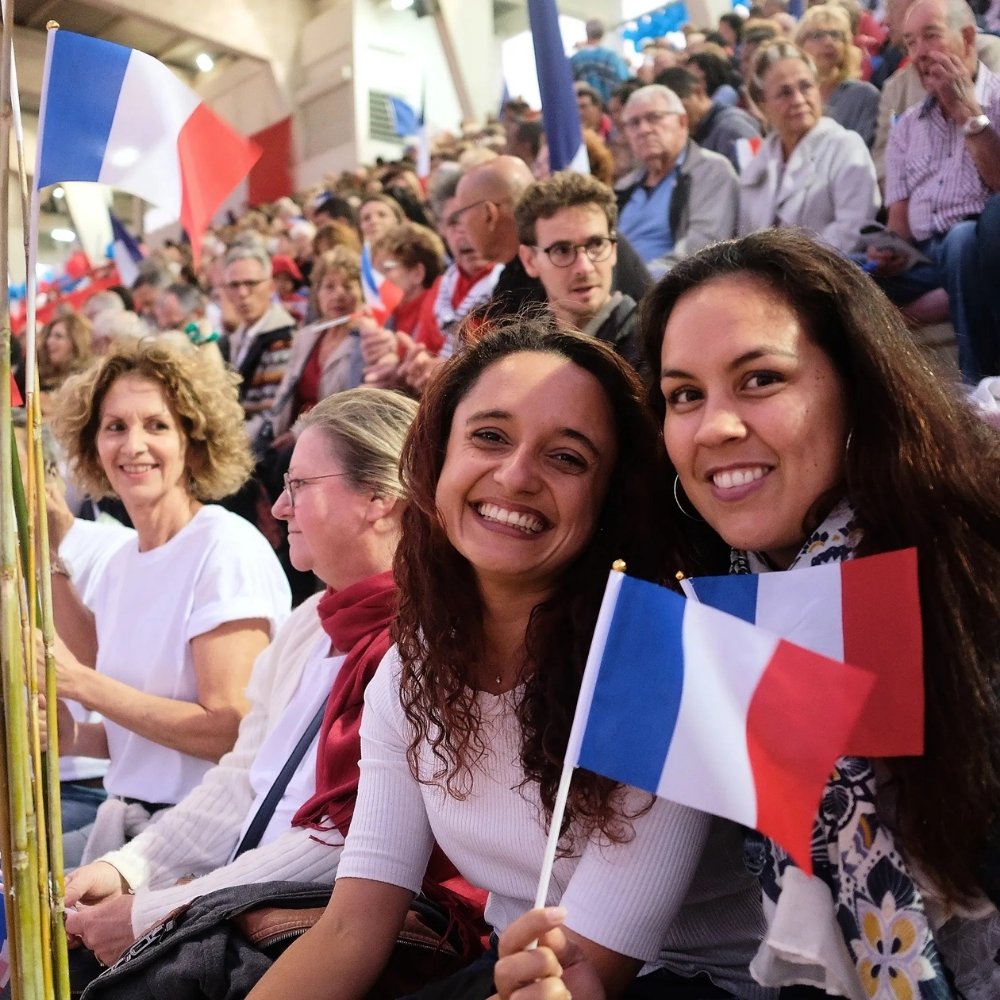
Food, Family, and Community Life
New Caledonian life revolves around family, food, and community — three elements that beautifully merge French refinement with island simplicity.
- Cuisine: Local dishes blend French gastronomy with island ingredients like fresh fish, taro, yams, and coconut. The bougna, a Kanak specialty of meat and root vegetables wrapped in banana leaves, is often served alongside French baguettes, pastries, and cheeses. This is really a valid symbol of the Melanesian and European cultural mix.
- Family structure: Families are close-knit and multigenerational. Respect for elders remains deeply ingrained, a value inherited from clan-based society traditions.
- Community spirit: The sense of belonging is strong — as locals often say, “everyone belongs to the clan.” Social gatherings, shared meals, and neighborhood support reflect a way of life rooted in connection and generosity.
Whether in rural villages or the modern streets of Nouméa, people maintain a sense of solidarity, cooperation, and shared responsibility that bridges Kanak heritage and French values.
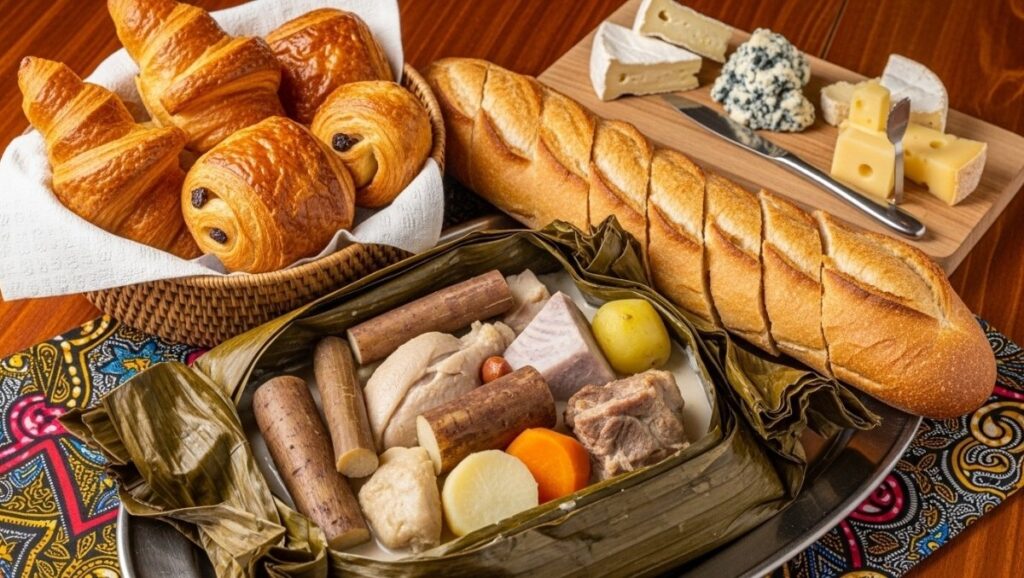
Festivals, Faith, and Social Values
New Caledonia’s calendar is filled with celebrations that capture its dual heritage — French and Kanak.
- Festivals: Events like the Yam Festival, which honors harvest and ancestral gratitude, and the Avocado Festival in Maré, celebrate the land and community. Meanwhile, Bastille Day and church feasts bring a distinctly French touch to island life.
- Faith: Christianity remains a central pillar of society, introduced during colonial times but embraced within Kanak spirituality. Churches often act as community centers, promoting unity and compassion.
- Core values: Across the islands, respect, honesty, sharing, and hospitality remain guiding principles — the essence of both Kanak customs and French social ideals.

Through these shared traditions, New Caledonia has cultivated a society that celebrates diversity without losing identity — a living reflection of how French influence and Melanesian traditions can coexist in harmony across the South Pacific.
Over the decades, French presence in New Caledonia has given rise to two distinct yet interconnected European-descended communities that continue to shape its modern identity.
– The Caldoches, descendants of early French settlers in New Caledonia, embody the pioneering spirit of farmers and traders who built lasting roots on Grande Terre.
– In contrast, the Métropolitains — more recent arrivals from mainland France — bring fresh perspectives through their roles in government, education, and business.
Together, these groups bridge European sophistication and Pacific island life, contributing to the vibrant social mosaic that defines New Caledonia today.
Final: The Spirit and Resilience of the New Caledonian
The New Caledonia people stand as a living bridge between tradition and modernity, where faith, family, and unity guide a society built on respect and resilience. From the ancestral wisdom of the Kanak people to the cultural influence of France, this island community has woven a unique identity — one that thrives on diversity and shared purpose.
Yet challenges remain. Education equality, employment opportunities, and the preservation of indigenous languages continue to shape the nation’s path forward. These are not obstacles, but invitations — calls to strengthen understanding between generations, cultures, and communities.
In the heart of the South Pacific, the people of New Caledonia remind us that harmony is not found in sameness, but in the courage to embrace differences — to stand together as one, while honoring every voice that makes their islands sing.
FAQs
Who are the native people of New Caledonia?
The Kanak people are the indigenous Melanesians of New Caledonia, representing about 41% of the population. They maintain strong ancestral, clan-based traditions.
What is the ethnic makeup of New Caledonia?
The population comprises Kanak (indigenous), European (Caldoches and French), Wallisian-Futunian, Tahitian, and Asian communities.
How has French culture influenced New Caledonia?
Through language, education, cuisine, and governance, French influence blends with local traditions, creating a unique Pacific-European identity.
What language do people speak in New Caledonia?
French is the official language, but over 30 Kanak languages are spoken, such as Drehu, Nengone, and Paicî.

I am a cultural historian and editor with over 10 years of research into pre-contact Polynesian history, the Lapita migration, and oral traditions. Share the excitement of my latest publications.
My contact:
Email: [email protected]
Tel: +64 21 456 7890

